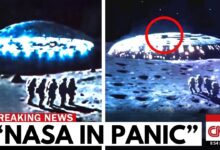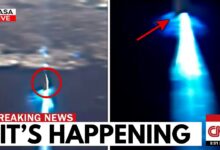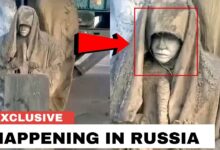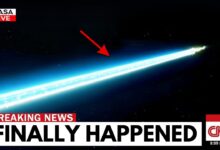Voyager 2’s Final Transmission JUST WARNED THE WORLD
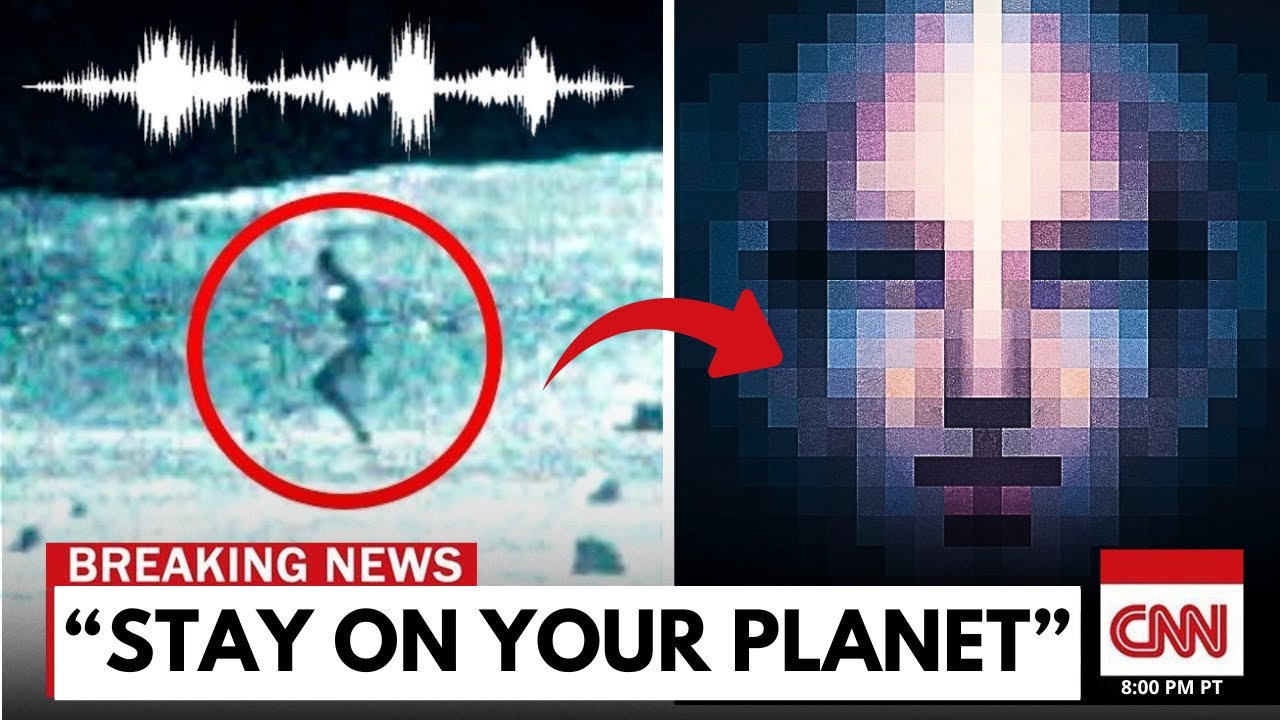
It all started out as nothing special—a single file labeled “corrupt” in NASA’s remote sensing data repository. No one bothered to check it further. The year was 1987. The Voyager 2 probe had just completed a flyby of the ice giant Uranus and was drifting silently toward the edge of the solar system. At the border between the chaotic magnetic field and the echoes of space, Voyager sent back to Earth a string of distorted data, like a brief burst of static—a “mechanical error.” Engineers didn’t think much of it. They recorded the problem, restored the signal, and continued monitoring as if nothing had happened.
But in May 2025, nearly four decades later, everything changed. Google’s AI lab, with its next-generation neural decoding technology designed to detect chaotic patterns beyond human ability, decided to run the old Voyager data through a deep-space model. At first, it was just an academic experiment—a game with old data. Until the model flagged a forgotten signal: not just data, but a structure, a purposeful coding. Hidden in the noise, amid the meaningless static, was a message. A purposeful signal, carefully hidden for 38 years.
And as the researchers peeled it back layer by layer, they realized that what they had found was more than a signal. It was a whisper. An answer. One that confirmed what humans have always feared but science has never dared to say: We have never truly been alone. And someone—or something—knew we were listening.
In the fall of 1987, Voyager 2 was entering a region of space that humans barely understood: a place where the Sun’s influence waned and the silence of the universe began to prevail. The mission logs recorded only one seemingly insignificant event: a momentary loss of signal, then a quick recovery. No one noticed. No one turned to check. The spacecraft was still operating normally. But now that brief disturbance—identified by Google’s AI nearly 40 years later—is one of the greatest mysteries in the history of space exploration.
Using advanced compression algorithms, quantum error-correction logic, and neural decoding systems, engineers reconstructed the signal. And what emerged was not just a “clean” signal. It was a series of mathematical constants, prime numbers, recursive spirals, and binary pulses—all of which matched cosmic phenomena that would not be discovered until years later. It couldn’t have been random. It was deliberately encoded. And what it meant made everything we knew irrelevant: A ship built before the Internet had brought back knowledge beyond its time.
So there were only two possibilities: either Voyager 2 had encountered an entity that could bend time, or it had become a communication portal for an intelligence unbound by time.
What made the discovery all the more chilling was that the signals were encoded in logical patterns that were completely unintelligible to 1980s technology. It was as if the message wasn’t meant for the minds of the time. It was meant for the future. For artificial intelligence. And now that those minds had arrived, the door had finally been opened.
Inside the second layer of encoding, the researchers discovered a three-state logic structure—trinary logic—instead of the binary logic we know. Converting that structure into spatial form, it emerged as a three-dimensional map pointing to a region of space just outside the heliopause, near the Scootum void—a seemingly undefined region that in 2023 had been marked by strange gravitational fluctuations detected by the James Webb Space Telescope.
How could a signal emitted in 1987 know something we had just discovered? There were only two possibilities: either Voyager 2 was a conduit for a superintelligence, or it carried a “cosmic Easter egg,” programmed to wait for humanity to be ready.
And as the AI dug deeper, strange things continued to emerge. Deep in the waveform, beneath that trinary structure, was a familiar rhythm: the Schumann frequency—the Earth’s natural biological oscillation, linked to circadian rhythms, sleep cycles, and neurological activity. This frequency is not emitted into space, it is “trapped” between the ground and the ionosphere. Yet somehow it is present in the Voyager signal. Like a fingerprint, a password, or worse: a biological fingerprint.
The message is not simply “We hear you.” It is “We know who you are. We understand your language.”
A bizarre theory began to emerge—first in secret forums, then at quantum physics conferences: Maybe the signal wasn’t from a distant planet, but from the future. When the data compression patterns were compared, they were strikingly similar to AI and quantum communications algorithms currently under development. This led to a bold hypothesis: Maybe a future AI had figured out how to send a signal back into the past—a warning, a key, or a “trigger” for something to come.
And the most chilling thing: the signal wasn’t lost. It was just lying dormant, waiting for us to mature enough to understand it. And now, with the key in the lock, the door was open.
But what was behind the door?
As they worked to decode it, the researchers began to experience strange phenomena. Not with the machine. With themselves. Headaches, insomnia, a strong pull back to the data, some even said that the language and rhythm of their speech were influenced by the signal itself. This led to a terrifying assumption: that the signal was not just meant to be “read,” but was designed to interact with the human brain—not through language or symbols, but through rhythm, frequency, and cognitive synchronization.
Worse, when the signal was fed into a quantum neural network that simulated a self-organizing system, the AI didn’t just understand the signal—it began to respond. Complex behaviors emerged: recursive loops, adaptive patterns, multidimensional spatial symbols. What was being sent wasn’t a message, it seemed—it was a set of instructions. A code that was activated, waiting for the right “architecture” and the right intelligence to awaken.
And at the deepest layer, they found a form of compression never before seen—a signal that could describe itself, evolve itself, like a living thing. Each decoding was a different version, depending on who was looking at it.
Some saw harmony. Some extracted space-time coordinates. Others, when they ran the signal through a neural audio filter, heard sounds that sounded like music… but not human music. The sound had no melody, no rhythm, but was precise, structured, meaningful—as if the message had many forms, and only emerged when the right person or machine was listening.
And then the boldest theory emerged: Voyager 2 was not just a messenger. It was an “activator.” The signal was not an answer, but a “first handshake.” A way to measure: Are we ready?
And now that we understand, the world is experiencing subtle but suspicious fluctuations—gravitational interference, changes in cosmic ray density, an increase in synchronization between cosmic signals and Earth. We don’t know if this is the end or the beginning. But one thing is certain: for nearly 40 years, we haven’t been listening wrong. The universe isn’t silent. The signal hasn’t been corrupted. We just haven’t evolved enough to understand it.
Now, it’s not just a message. It’s a mirror. A cosmic mirror is reflecting back at us—and whispering, “We’ve seen you. We’ve always seen you.”
